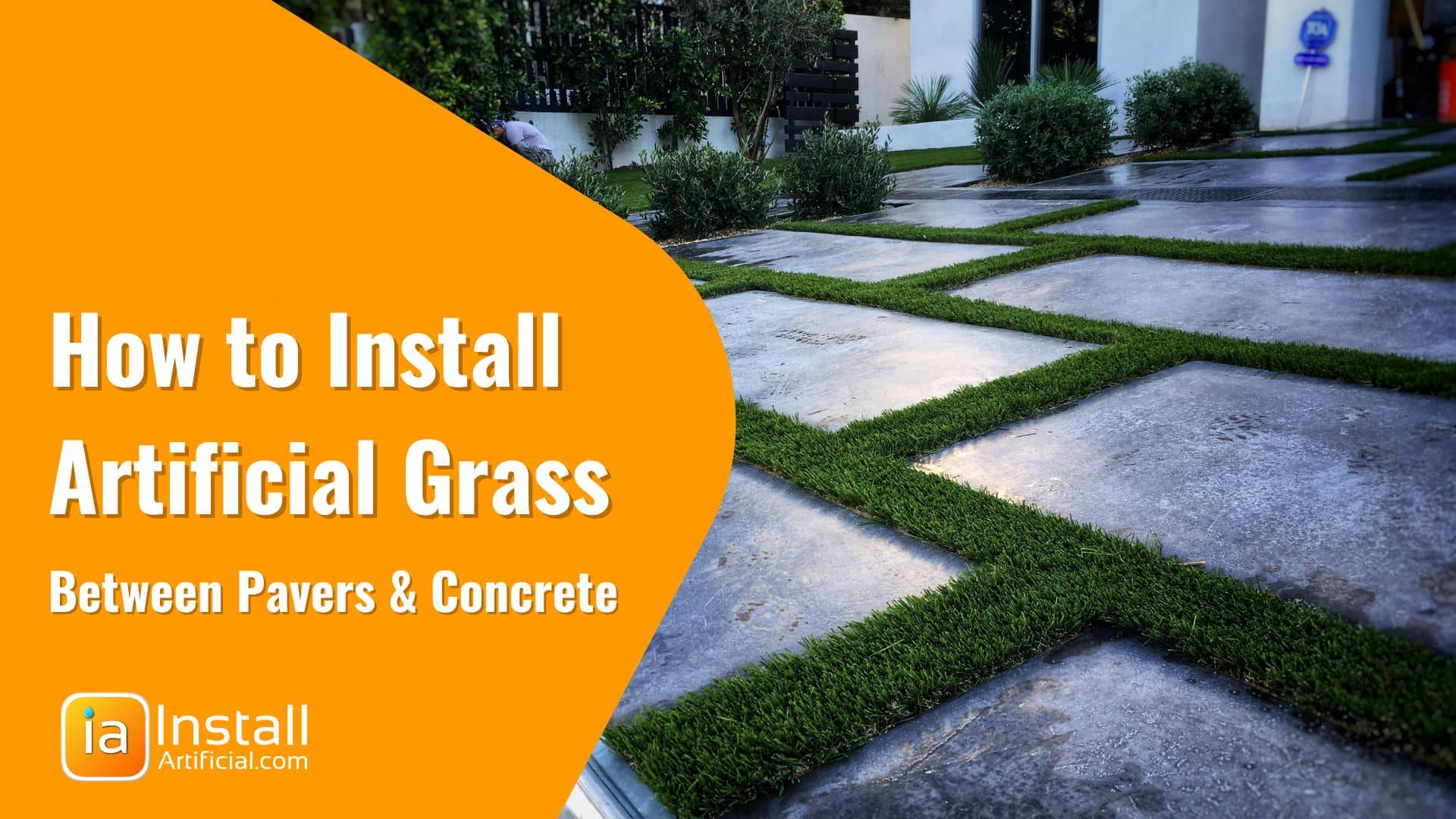
Synthetic turf between concrete slabs or pavers has become a trending home edition on driveways, patios, and backyards. Installing plush artificial grass is the perfect...
Discover how customers are enhancing their property by installing turf between pavers and concrete slabs. Learn where this works best, and decide if this is the right installation method for your needs.
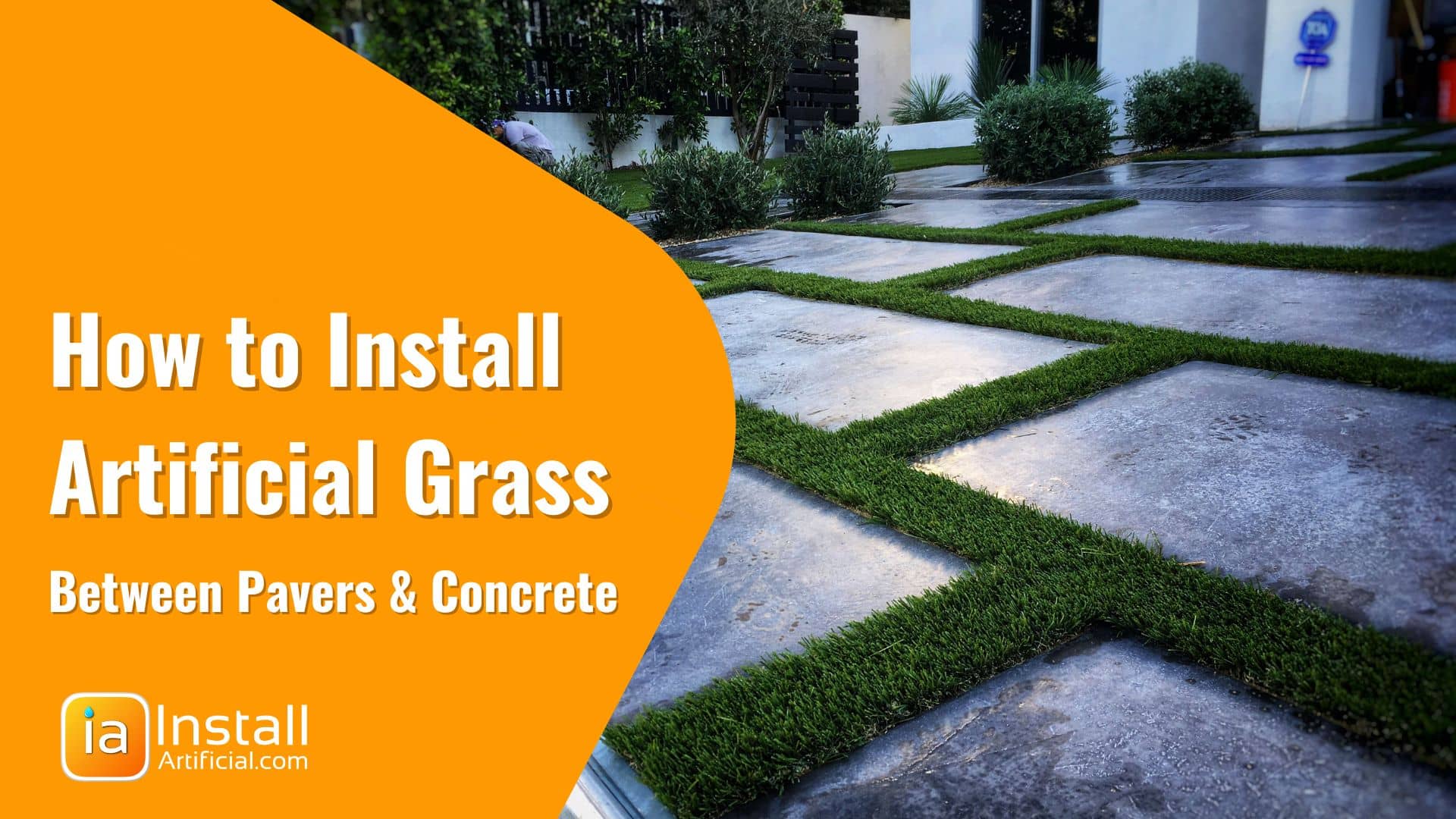
Artificial grass installation is becoming more and more frequent, but most people have no idea how customizable fake grass is! Because artificial turf can be installed anywhere and doesn't have the same requirements as natural grass, homeowners are becoming more creative with how they're implementing artificial grass into their spaces to elevate the look of the backyard with an artificial lawn.
Fake turf can be used to accentuate your patio, deck, or pool with the addition of design elements. However, is not just for gardens or backyards. With different textures and colors, artificial grass can be used to enhance nearly any space. It can be cut into strips or given curved edges to fit your existing landscape design, making it a no brainer to install artificial grass. It’s this versatility that makes integrating artificial grass material into backyard designs possible!
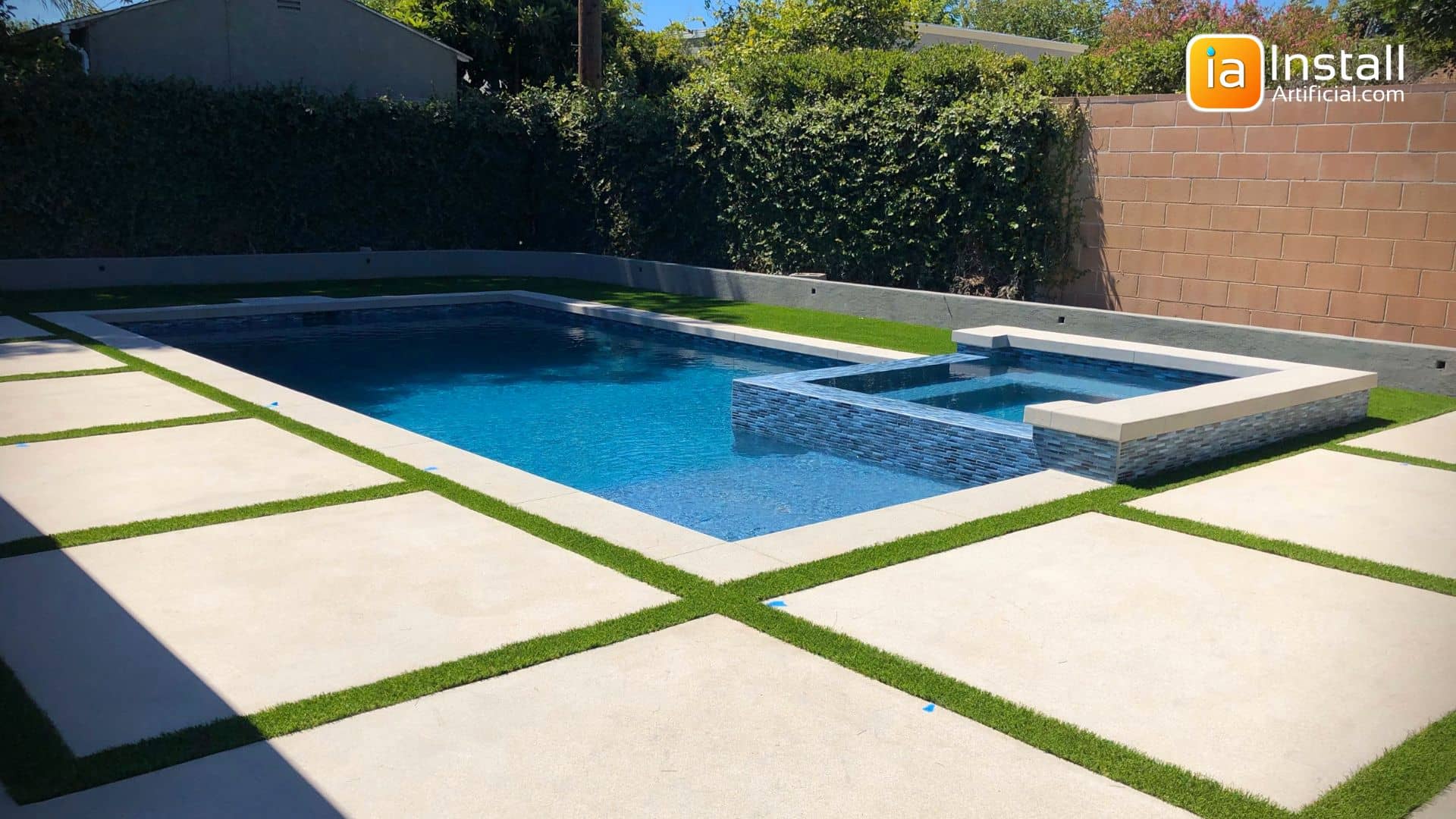
Artificial grass strips are cut strips of artificial grass that are installed in between concrete pavers or slabs. Artificial grass between concrete slabs can be installed to be completely flush with the concrete, or provide a fluffy overspill depending on the homeowner's preferences. You can lay artificial grass stripes in driveways, backyards, commercial spaces; basically anywhere that concrete slabs are installed.
Typically natural grass cannot thrive in these small sections and will be patchy if any grass grows at all. Laying pebbles between the concrete slabs can become a trip hazard and doesn't provide any cushion or shock absorption. Installing artificial grass brings some plush greenery to an otherwise drab area. Synthetic turf ribbons between pavers are a growing trend that can enhance your paving slabs immediately.
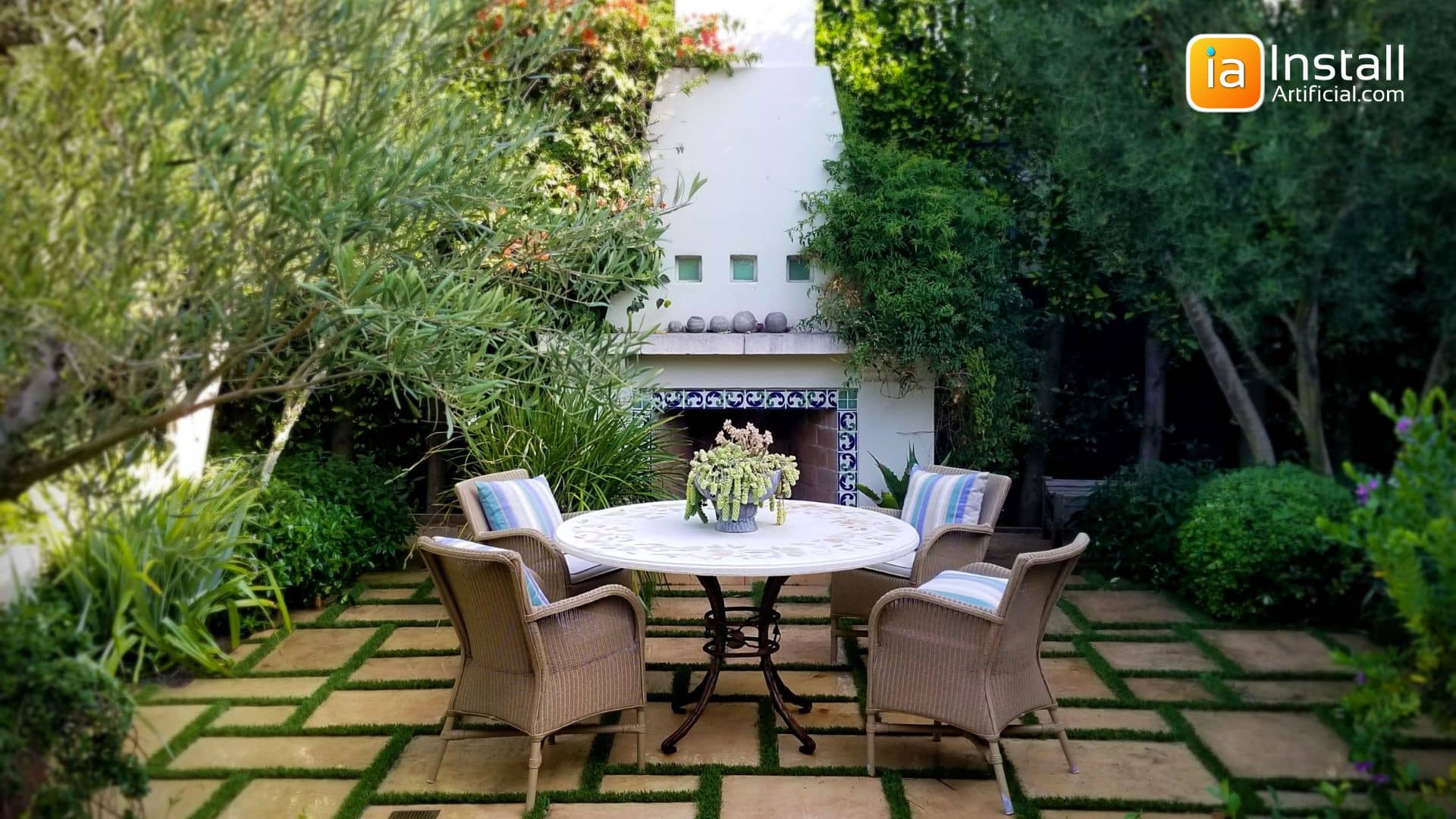
A subtle nuance of color and texture is created by this combination of turf materials. The hard stones make the backyard feel sophisticated while a delicate layer of synthetic grass offers simplicity in its softness. Install artificial grass strips to create a connected space with areas to explore, all of which blend together with the winding paths created by stone pavers that lead visitors through each area.

Turf stripes between concrete slabs make backyards more inviting by adding design elements that are easy to maintain and care for. It's not only an aesthetically pleasing natural lawn alternative, but it also looks great year-round without the need for time-consuming maintenance or worries about rogue weeds!
Required lawn care is almost non-existent, simply spray water on the area occasionally and re-fluff the blades with a push broom on occasion.
With advanced technology and permeable backing, artificial grass usually provides better drainage than natural grass. Artificial lawns have holes punched in the grass backing. The turf fibers will absorb water and reroute the liquid beneath the surface to give you a quicker drying space and adequate drainage. Artificial grass is also much less slick than natural grass, making it ideal for around pools!
Prior to installing turf ribbons, you can also drill drainage holes on the concrete or paver edge to provide proper drainage on the hard surface as well. The drainage holes will give water another place to exit and avoid excess water in all the turf ribbons.
The ideal amount of space between pavers for grass to lay in between is around 4 inches. This provides enough space to manually compact the soil before laying your turf strips and will look the most appealing.
In addition to providing extra space to work when preparing the subbase underneath and laying turf, a 4-inch width of artificial grass between pavers will also look the most appealing.
First, ensure that any sprinkler heads in the area are capped. For turf installation between concrete, remove a little bit more soil than usual, approximately 3", to create a tougher base and help prevent weeds from popping up later.
Your turf base layer between concrete slabs will require manual or stamp compaction, but make sure the base is completely compacted before moving on or your installation may fall apart over time. While many DIYers will use decomposed granite, class II road base will provide the most secure base.
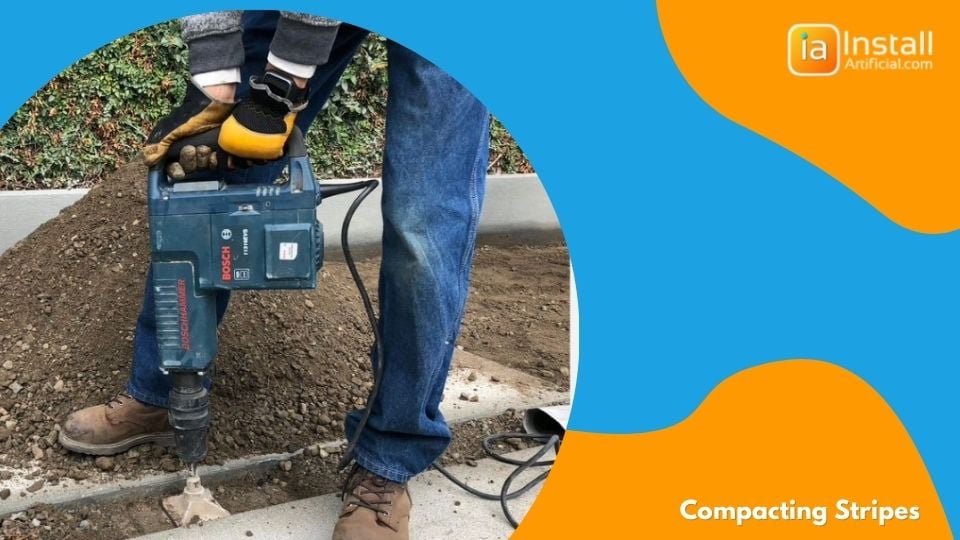
Let your fake grass lay in the sun for about 30 minutes before cutting, this will make the turf much easier to work with. Whether you're cutting the grass into turf strips or irregular shapes, make sure to measure multiple times before cutting to not make a mistake.
Once the turf is cut and laid, you can begin securing the installation. Prior to nailing, make sure the grass blades of each artificial grass strip are facing the same direction, otherwise, your installation won't look seamless and will look noticeably fake, appearing almost like a checkerboard. When looking at the grass fibers, the artificial turf stripes will noticeably face a certain direction.
If you'd like to make sure the blades are all in the same direction before proper securing, you can use temporary spikes to hold them in place.
To ensure the fake grass is fully secure, use non-galvanized nails every 2" along the perimeter of the fake grass along the pavers' edge. Make sure each nail is hammered in all the way to hide nail placement. This will ensure that there are no lift edges that could cause trip hazards.
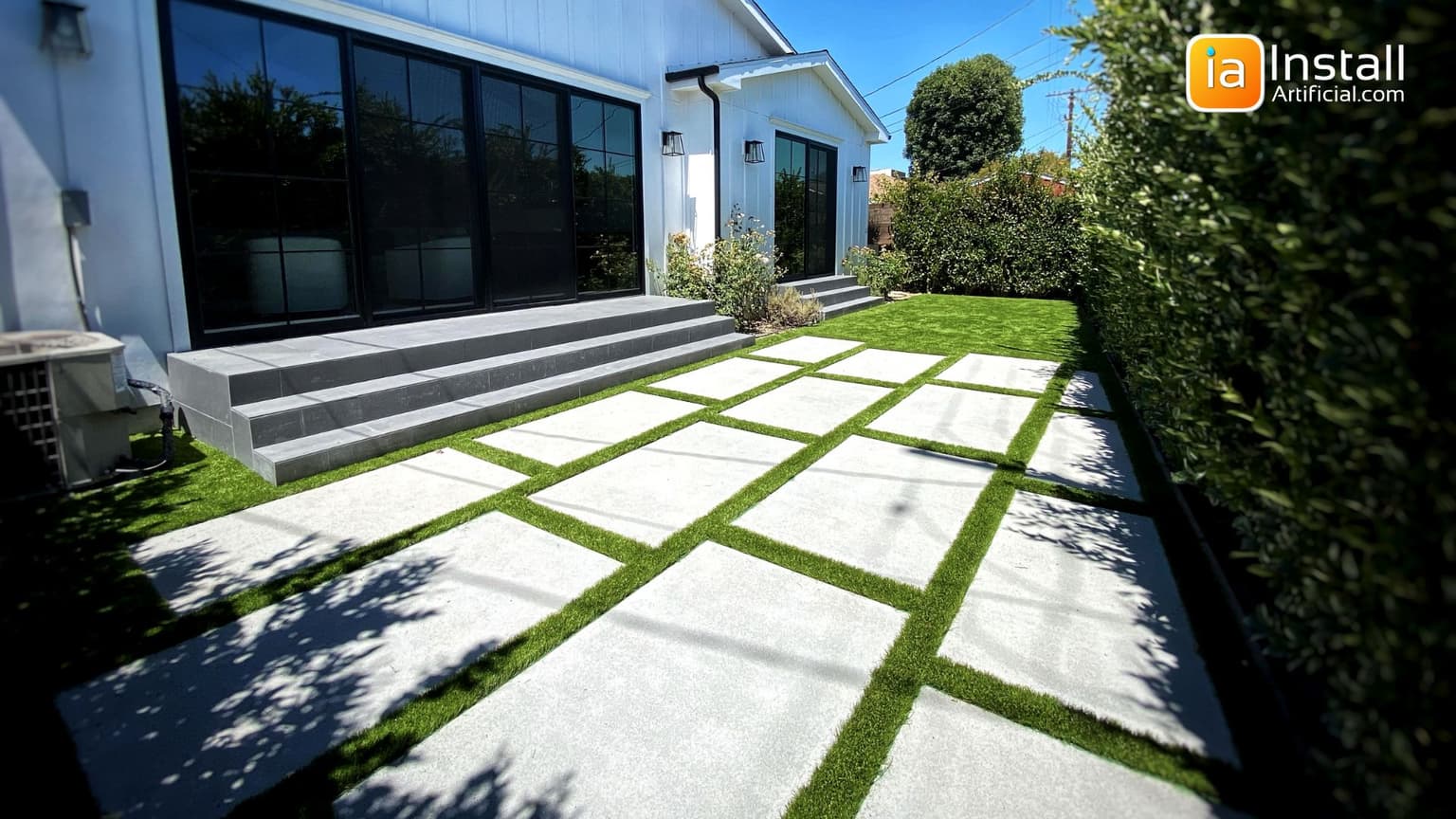
Once the entire perimeter is secured, you can apply your premium turf infill. Use a stiff hand brush or power broom to evenly distribute and push the infill down toward the turf backing. During the infill process, lay the infill slowly to avoid using too much infill, it will be difficult to redistribute. This will allow the grass blades to stand upright and prevent wrinkling.
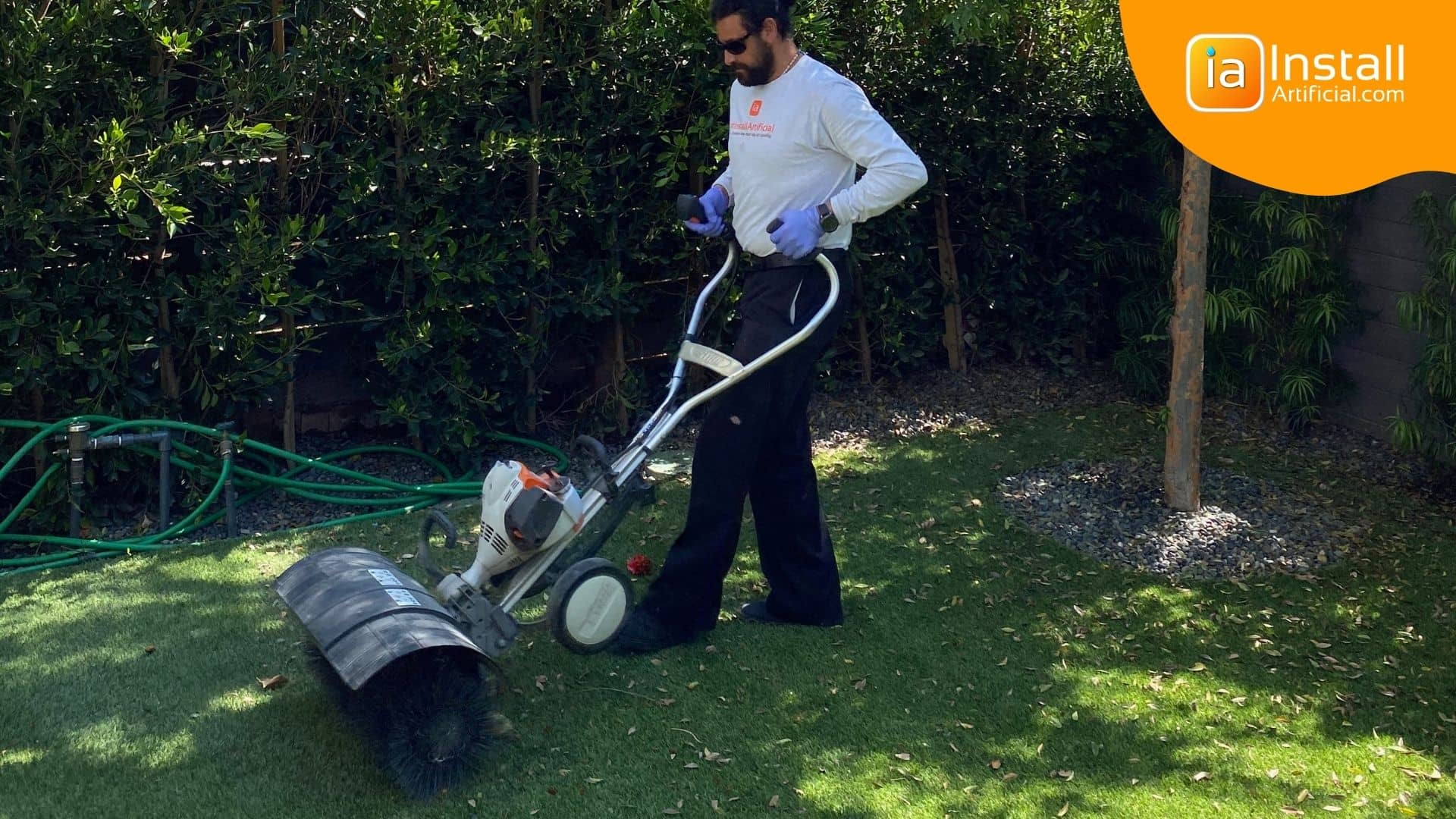
When you install infill, lay the infill slowly between the paving stones to avoid using too much infill. It will be difficult to redistribute in the small cracks.
You can install artificial grass on top of concrete, tile, and pavers! Just make sure you backfill the gaps between the pavers with road base or DG to create a smooth and level surface for the installation.
Many homeowners will attempt to either grow natural grass or lay sod between pavers. This is definitely possible but often does not provide the desired look or feel. It's difficult for natural grass to thrive or become healthy in these small cracks. For this reason, synthetic grass between concrete slabs will offer the best year-round look with no maintenance requirements!
Installing fake grass between flagstones will immediately create a more inviting and enhanced area. While this installation becomes more tricky due to the irregular shapes, the installation steps are the same as when installing fake grass in straight strips. Reference our installation guide above for more info!
Pro Tip: Use any excess grass from the rest of the yard to cut up and install between flagstone. This will help save on waste material!
If you're looking to turn your drab driveway into a sophisticated eye-grabber, or simply install turf around existing pavers in your yard or commercial space, check out our turf stripes portfolio! When you're ready to learn more about how to lay pavers with grass between them, request a free estimate below!

Synthetic turf between concrete slabs or pavers has become a trending home edition on driveways, patios, and backyards. Installing plush artificial grass is the perfect...
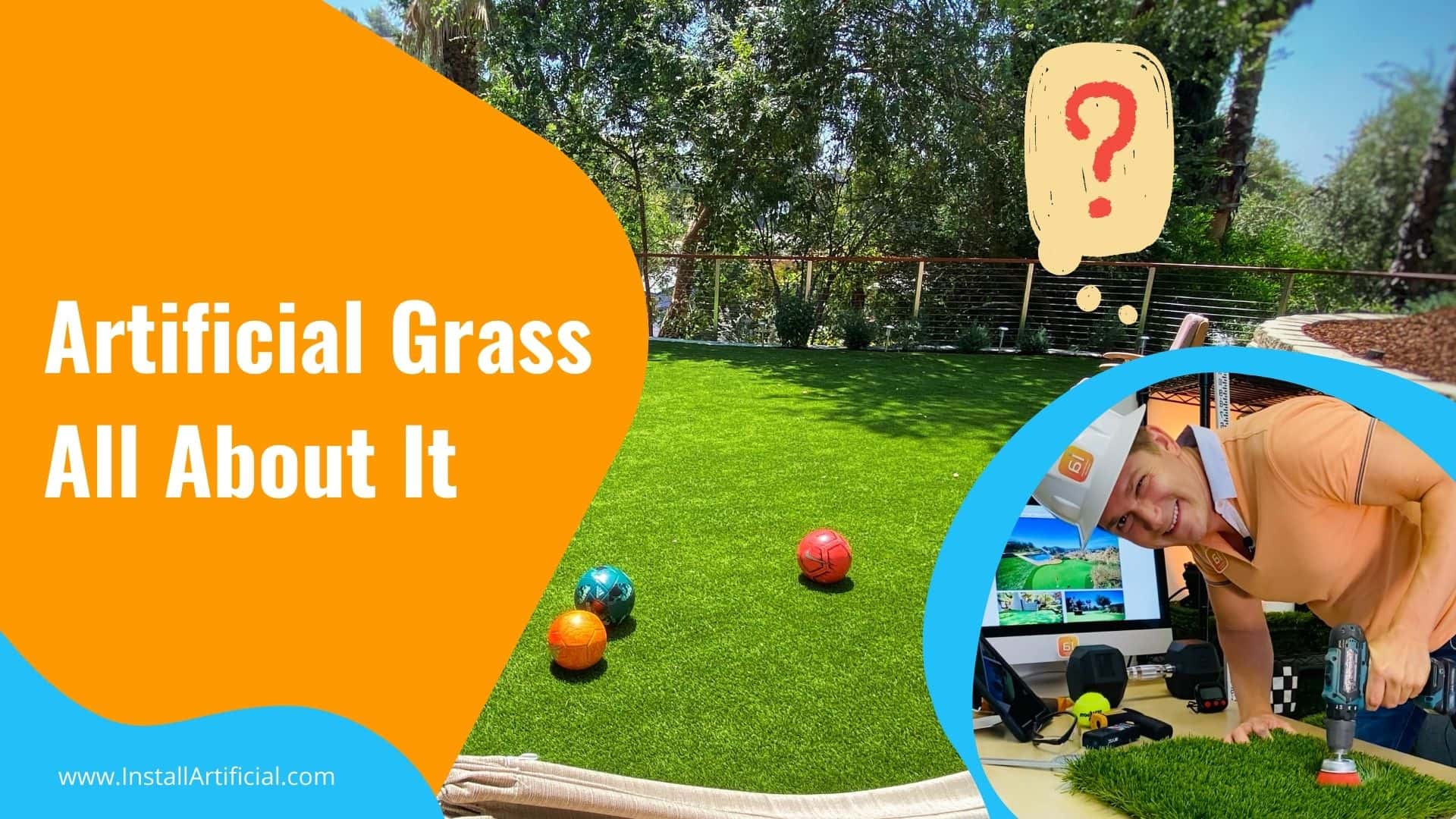
Is artificial grass right for you? Find the answers to the most important questions before you buy or install artificial grass. Learn key terms, the different types,...